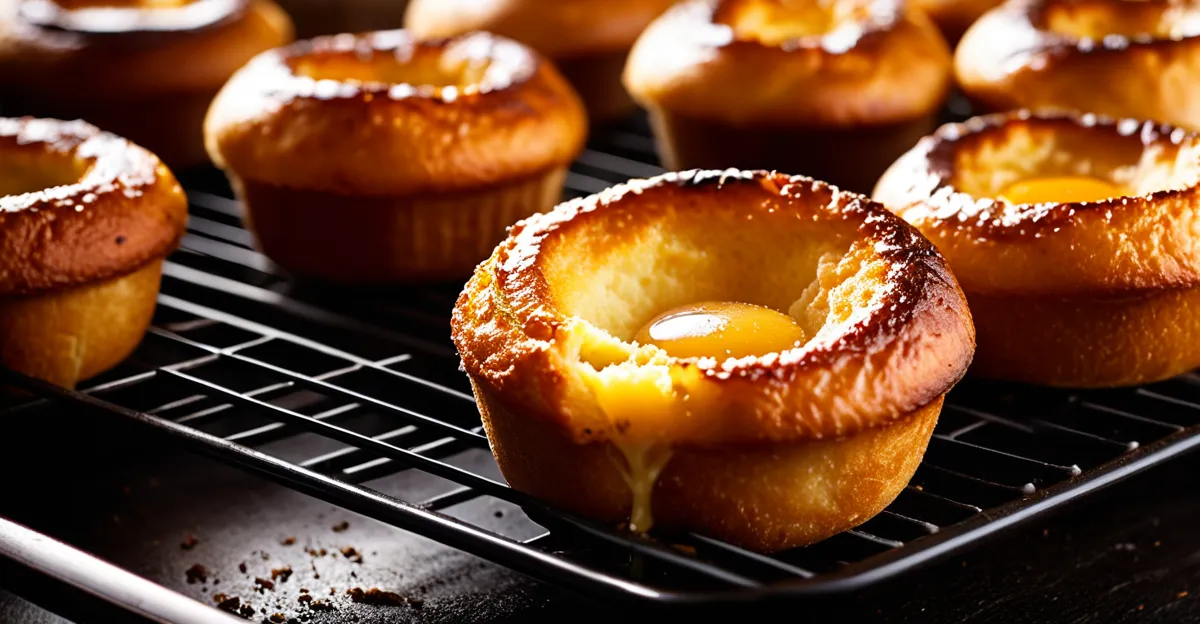Essential Ingredients and Equipment for Yorkshire Pudding Success
Selecting the best ingredients lays the foundation for outstanding Yorkshire pudding basics. The flour should be plain or all-purpose, as its moderate protein content ensures a light yet sturdy batter. Use fresh, large eggs; they provide structure and richness that help the puddings rise well. Whole milk is preferred for its balance of fat and moisture, enhancing the batter’s texture and flavour.
When it comes to baking tools, choosing the right baking tins is critical. Deep, individual pudding tins or a well-greased muffin tray allow the batter to rise upwards, creating the traditional hollow centres. The oven setup must be hot and consistent; preheating the tins before adding the batter is essential for achieving that spectacular puff.
This might interest you : Title: How Does Traditional UK Cooking Influence Modern British Cuisine?
Fat choice dramatically influences both taste and texture. Traditionalists favour beef dripping for its authentic flavour and superior heat retention, which promotes crisp edges. Alternatively, vegetable oils can be used, but ensure they are smoking hot to replicate the same effect. The combination of these best ingredients and precise equipment use guarantees Yorkshire puddings that impress every time.
Step-by-Step Yorkshire Pudding Recipe and Technique
Mastering the Yorkshire pudding recipe starts with precise preparation. Begin by whisking the best ingredients—plain flour, fresh eggs, and whole milk—until the batter is smooth and free of lumps. A well-mixed batter ensures even cooking and a superior rise. The step-by-step guide suggests resting the batter for at least 30 minutes at room temperature. This rest allows the gluten to relax and the starch to absorb moisture, resulting in a lighter, puffier final pudding.
Also to read : What are some tips for baking the perfect scones?
Preheat your chosen baking tools thoroughly. Pour a small amount of fat into each tin and heat until it is not just hot but almost smoking. This critical step lets the batter sizzle on contact, forming the signature crispy edges. Pour the rested batter swiftly into the hot tins without hesitation to lock in air bubbles vital for the Yorkshire pudding basics of rise and texture.
Bake immediately in a preheated oven set around 220°C (425°F). Avoid opening the oven door early, which can cause the puddings to collapse. Following this step-by-step approach ensures consistent, elevated results every time you bake.
Tips for the Perfect Rise and Crispiness
Achieving the perfect Yorkshire pudding requires mastering oven temperature control. Set your oven to a high heat, ideally around 220°C (425°F), to encourage rapid steam formation inside the batter, which is the key driver for an impressive rise. Avoid lowering the temperature during baking, as this can cause collapse or deflation.
A vital baking tip is to resist opening the oven door early. This sudden temperature drop interrupts the rising process and can turn your puddings flat. Patience here ensures those signature tall, airy shapes.
To get crisp edges with a soft centre, preheat the fat in your baking tools until it is nearly smoking hot. Pour the batter in swiftly, allowing it to hit the hot fat and sizzle immediately. This reaction crisps the exterior while the interior remains tender and hollow.
Be mindful not to overmix batter; excessive mixing can strengthen gluten too much, leading to dense puddings. By following these techniques, you can consistently produce Yorkshire puddings with excellent rise and irresistible texture.
Troubleshooting Common Yorkshire Pudding Problems
When Yorkshire puddings turn out flat or dense, the likely causes are batter temperature, oven heat, or mixing technique. The Yorkshire pudding troubleshooting starts with ensuring the batter is rested at room temperature; cold batter reduces steam formation, which is essential for rise. Also, verify that the oven and baking tools are thoroughly preheated—the fat must be almost smoking hot to create bubbles that puff the batter.
If puddings bake unevenly or stick to the tins, check the choice and amount of fat. Beef dripping is traditional for its crispiness and non-stick properties, but if using oil, ensure it’s heated sufficiently. Inadequate greasing or low-quality tins can cause sticking, so opt for well-seasoned or non-stick baking tools.
Altitude and oven type impact baking performance. Higher altitudes may require slight adjustments in oven temperature or batter hydration to prevent collapse. For electric ovens that tend to run cooler, increasing heat briefly can improve rise and browning. These targeted fixes address main baking issues to help you consistently achieve the Yorkshire pudding basics of tall, crisp results.
Serving and Enhancing Your Yorkshire Puddings
Elevating your serving Yorkshire pudding experience begins with classic British accompaniments such as roast beef, rich gravy, and roast potatoes. These traditional pairings complement the Yorkshire pudding basics by balancing crispy texture with hearty, savoury flavours. For a modern twist, try filling puddings with sautéed mushrooms, caramelised onions, or even a dollop of creamy horseradish sauce, which adds a fresh dimension to the meal.
Proper serving suggestions also consider presentation and timing. Serve Yorkshire puddings immediately after baking—this preserves crisp edges and hollow centres critical to enjoyment. To maintain texture when reheating, place puddings in a hot oven for a few minutes rather than microwaving, which can cause sogginess.
Storage is straightforward: cool puddings completely before refrigerating in an airtight container. When ready to enjoy again, the right baking tools like an ovenproof tray help restore their signature bite. Adding garnishes such as fresh herbs or a drizzle of delicate gravy can enhance both flavour and visual appeal, making your Yorkshire puddings a memorable highlight of any meal.







